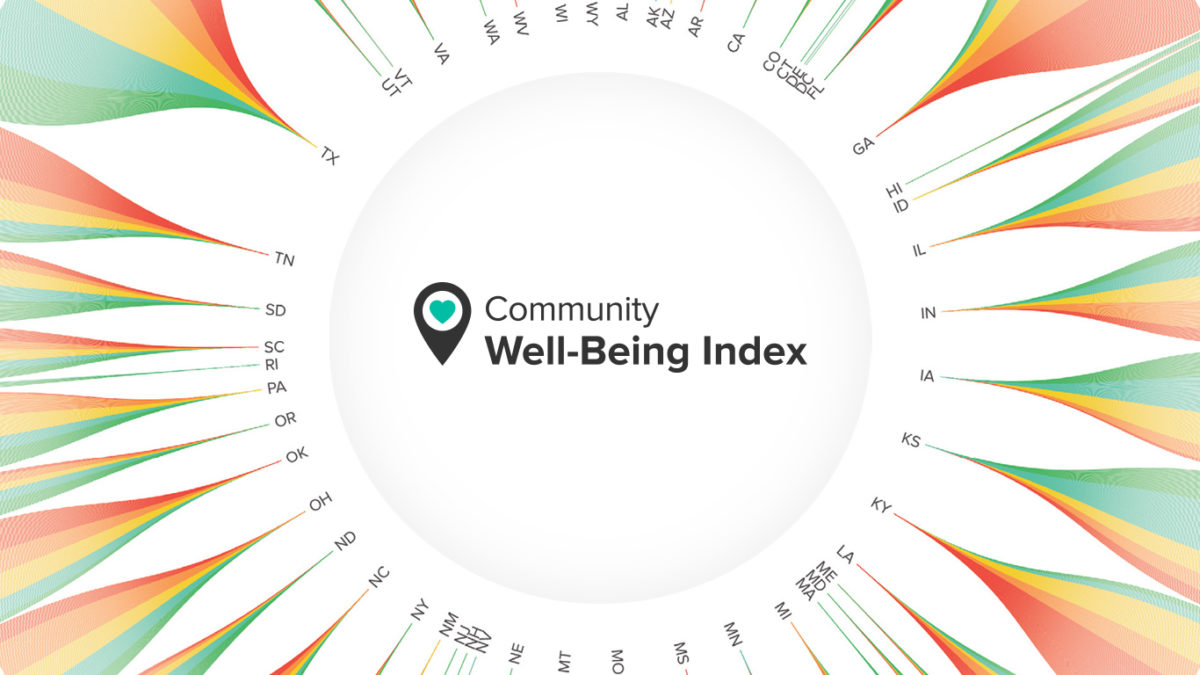A closer look: Community well-being at a crossroad

This year has been one like no other. When looking across the various dimensions of well-being, it’s easy to see how situational shifts in any number of them can impact populations at scale. From the effects of political discord and social unrest on intrinsic measures of our well-being, to the salient impact of the pandemic on physical health and average life expectancy, recent happenings show just how significantly one year can change our relationships with our health.
Last year, in partnership with Boston University’s School of Public Health, we introduced the Sharecare Community Well-Being Index – a dynamic, next-generation instrument that builds upon our history of studying health and well-being across U.S. populations. By integrating social determinants of health (SDOH) such as healthcare access and economic security into our measurement, we’ve achieved the industry’s most comprehensive view of health risk and well-being with the unprecedented coverage of 99.9% of U.S. counties and all Census-designated metropolitan statistical areas (MSAs). In recent weeks, we released our 2019 County & MSA rankings, which serve as a critical benchmark as we study and measure the impact of this watershed year for health and well-being. And as we uncover learnings from communities where well-being measures are highest and lowest, they’re providing powerful insights that will enable targeted interventions to drive recovery in the near-term and resiliency into the future.
Looking at 2019, what separated the highest and lowest ranking MSAs? What stands to drive resiliency in one community and vulnerability in another?
Among the top-performing MSAs, commonalities in 2019 included trends such as greater wealth per capita, higher levels of education and voter participation, and even greater measures of racial and ethnic diversity than the rest of the nation. Examples include San Francisco (#1), Boston (#5), Honolulu (#7), and New York (#9), which set the standard for the rest of the nation in measures of well-being and SDOH. On the opposite end of the spectrum, commonalities among the lowest ranking MSAs included the presence of prisons or military bases, economies driven by “vanishing industries,” and incidents of community-level trauma or unrest. As examples, Hammond, Louisiana (#382), has been identified as the most violent city within the nation’s most violent state based on FBI crime density data, and earlier last year, a mass shooting occurred in the bottom-ranked community of Sebring, Florida (#383).
In addition to national trends tied to MSAs, the report also uncovers differences in community well-being across top- and bottom-ranked counties, including differences in community well-being for counties that fall within MSAs compared to those that fall outside.
In alignment with findings from our 2019 state report, which showed broadly lower levels of well-being for rural areas, our MSA and county data found counties falling outside of major metropolitan areas were significantly more likely to fall in the bottom 10% of counties nationally in the CWBI in 2019; in fact, almost 80% of the bottom decile was represented by counties located outside of MSAs. As we observe broadly lower levels of community well-being as well as recent surges of COVID-19 in areas outside of major metro areas (including rural communities), we’re determined to leverage these data and insights to help steer changes in well-being and resiliency for these communities, as well as others across the nation.
As we continue to study well-being and health risk through the CWBI, we’re encouraged by this unmatched view and the ongoing learnings we stand to gain. But more importantly, we’re confident in the power of these insights to enable providers and payers, civic leaders, employers, and other institutions to play vital roles in improving well-being among their communities and populations. With our partners across the healthcare ecosystem, we’ll look forward to driving this positive change through the power of partnership and in the spirit of being all together better in 2021 and beyond.
For detailed insights from the Community Well-Being Index, check out more research and analysis, Data in Action articles, and full reports at wellbeingindex.sharecare.com.